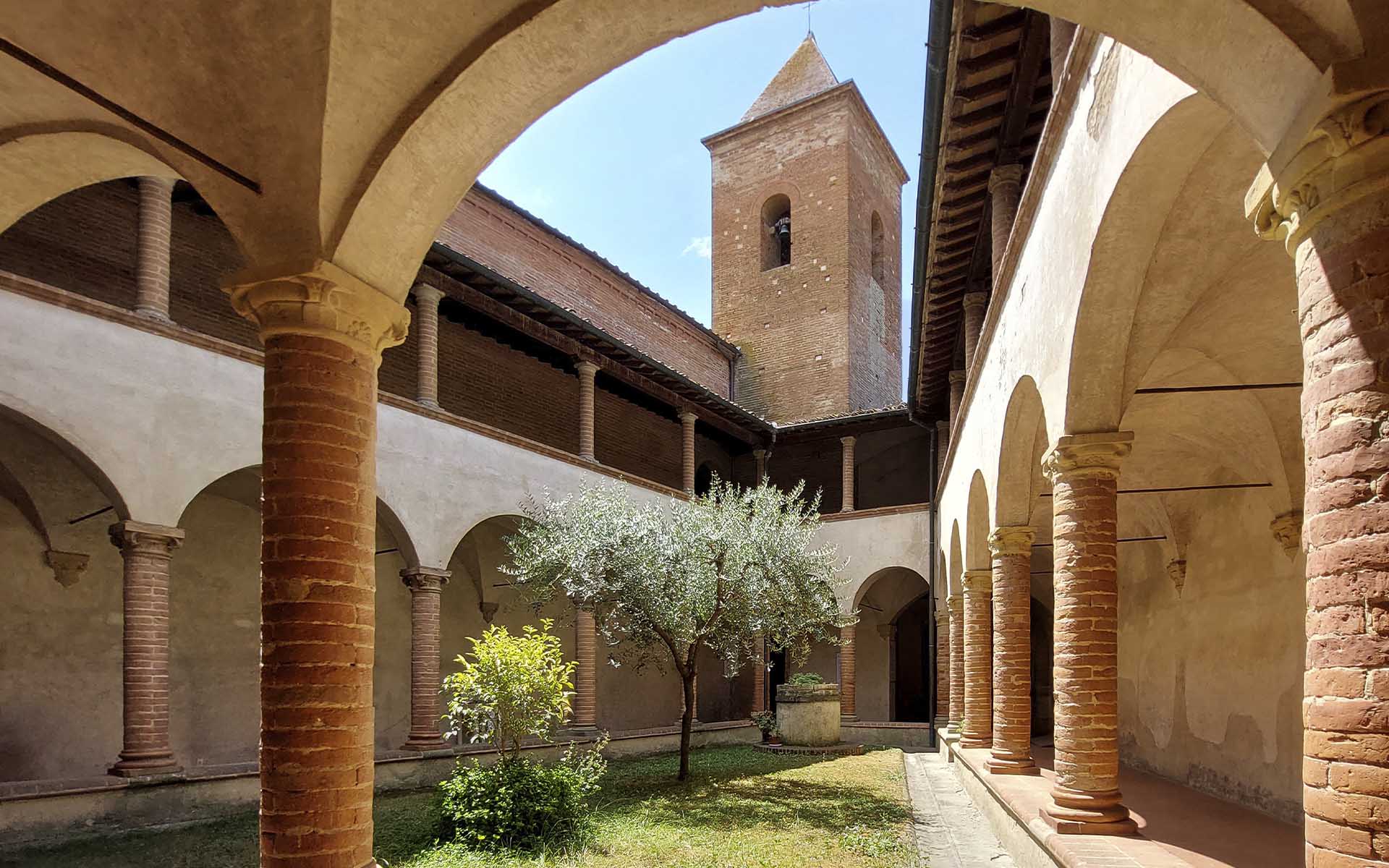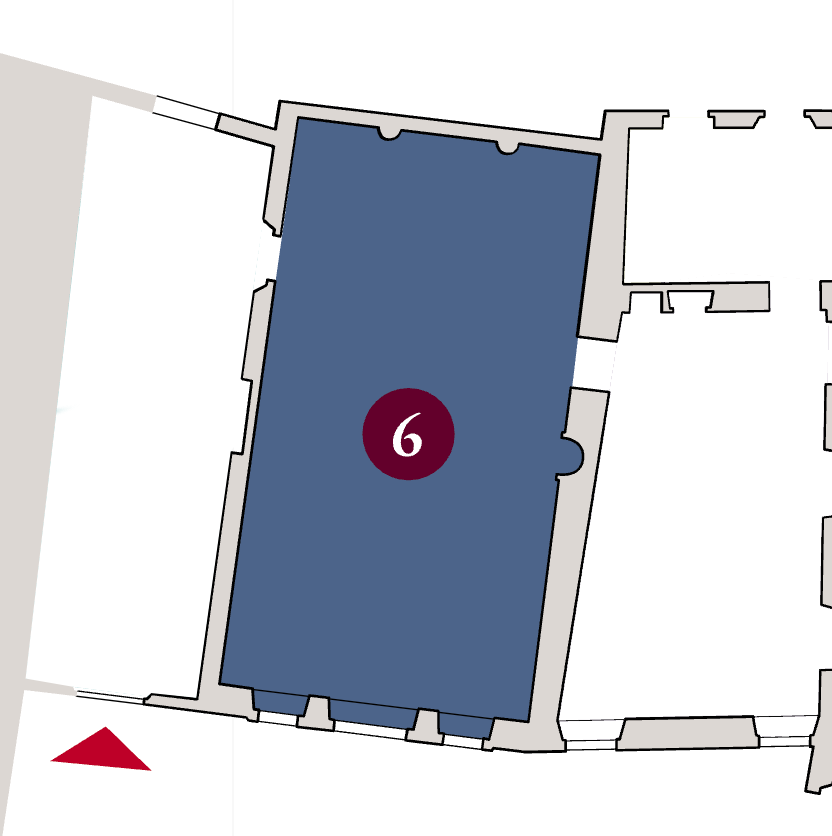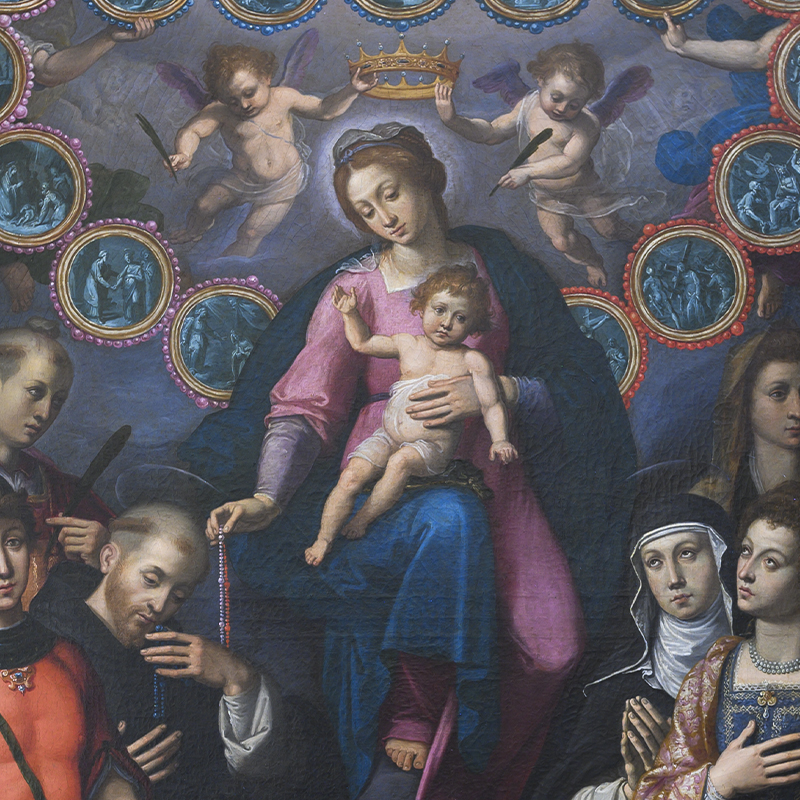The hall, formerly the seat of the Company of Santissima Annunziata, is the result of the convent Chapter’s conversion in 1620, the date inscribed on the door lintel.
On the high altar, large canvases depict the Madonna and Child with Saints, including Monica, Augustine, and Nicholas of Tolentino of the Augustinian order, dated between 1620 and 1623, recently attributed to Gabriele Grassi (a Florentine painter of whom little is known but of probable Sienese training), and a canvas depicting the Annunciation datable to around 1620.
Among the sculptures, there is an elegant gilded wooden statuette depicting the Madonna with Child, with strong Sansovinesque references because of stylistic affinities with bronze sculptures of which many variants are known, from the church of Santa Maria a Bagnano, where it was kept by the Company of Santissimo Rosario and carried in processions.
Two painted wooden sculptures represent Augustinian saints: Nicholas of Tolentino, recognizable by the rayed sun on his chest and the stars embroidered on his black robe, and St. John of San Facondo holding a chalice containing the rayed host, works formerly assigned to the Sienese sculptor Tommaso Redi, but thought to be later in date because of the beatification of the Spanish saint in 1601.
Lastly, on both sides of the altar, there is a group of four wooden sculptures with Blessed Jacopo Guidi, Giovanni da Rabatta, Davanzato and Alberto degli Alberti, commissioned in 1856 from sculptor Antonio Rossi for the setting up of the Beata Giulia cell, works of no great quality but part of an ensemble that reconstructs the furnishings of the destroyed 19th-century chapel in 1963.





